In the field, one now and then comes across Mesembs with blackish stains which apparently are caused by fungi (sooty moulds) that grow on the sweet honeydew secreted by-sap sucking insects.
Although this makes the plants less attractive to look at, they do not normally seem to suffer much from it. The subject of this post is often a victim of these attacks; other well-known examples are Antegibbaeum, Cephalophyllum and Cylindrophyllum.
Over time, C. pachyphylla will form clumps of waxy* grayish leaves which are up to 6 cm long and three-angled in cross-section with a very oblique keel.
Usually the flowers are purple pink, rarely white or pale yellow. They are 2.5-3.5 cm in diameter and appear in late autumn to winter( May-July).
Although there are not very many populations, the plants are often locally abundant on sandstone rocks and shale ridges in the Little Karoo between Barrydale and Oudtshoorn.
* The genus name is derived from ceros = wax and chlamys = mantle.

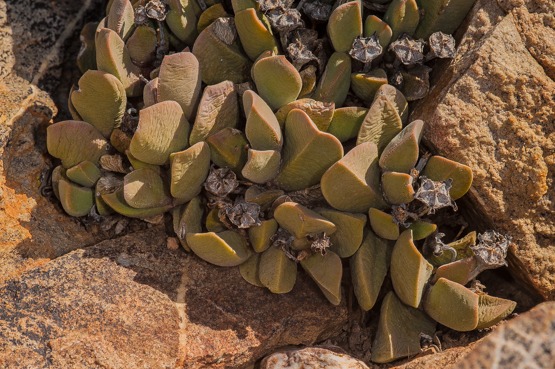
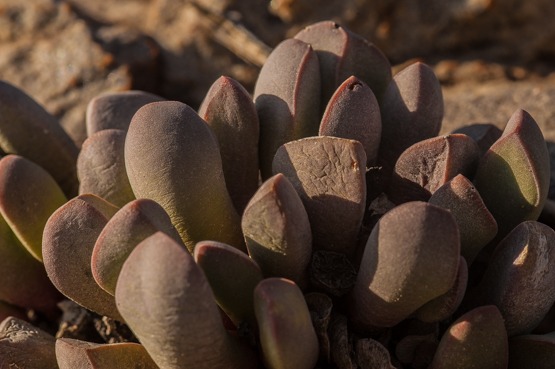
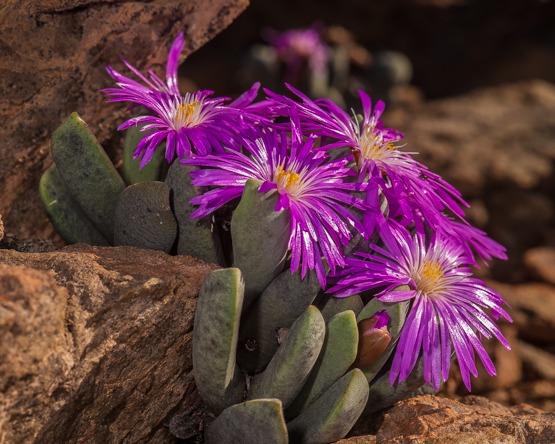
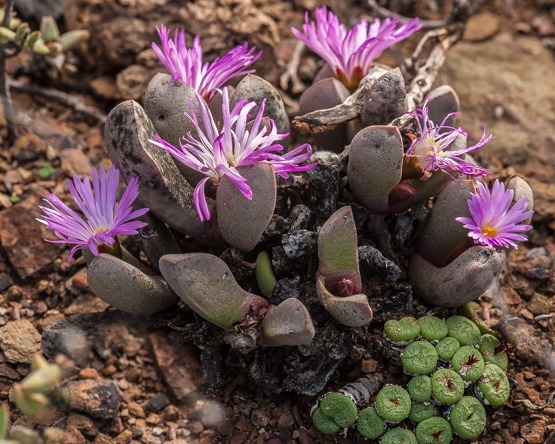
With Conophytum truncatum
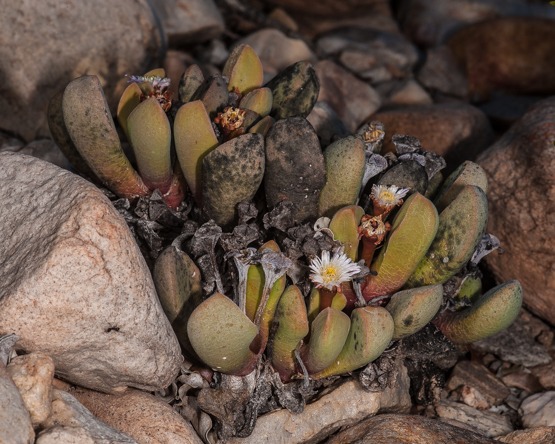
Dankie Frans, weereens my dag opgekikker deur my vir ‘n paar minute in die veld te plaas.
Hallo Retha, ek is bly jy geniet dit!